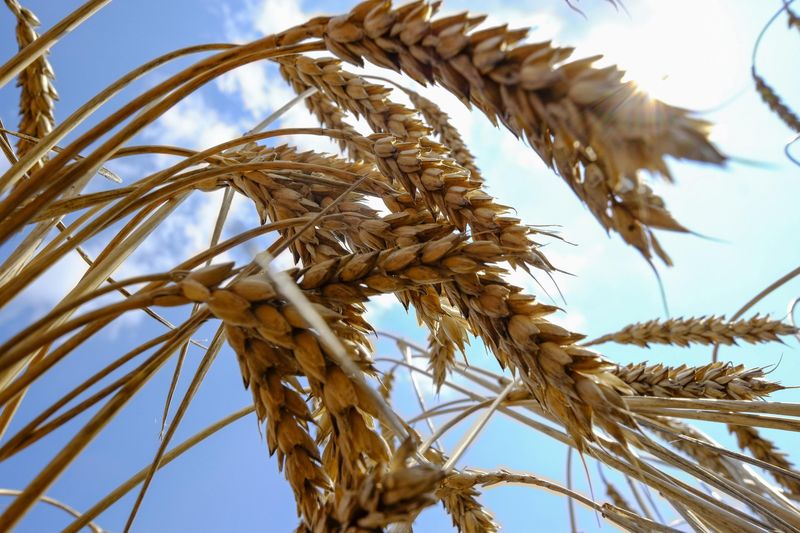Investing.com - U.S. wheat futures rose to one-week high on Thursday, as prices remained supported after the U.S. Department of Agriculture lowered its outlook for domestic and global supplies earlier in the week.
On the Chicago Mercantile Exchange, US wheat for May delivery rose 2.52 cents, or 0.51%, to trade at $5.0213 a bushel during U.S. morning hours. Prices touched an intraday peak of $5.0300 earlier, the most since March 4.
A day earlier, wheat jumped 5.6 cents, or 1.17%, to close at $4.9900.
The USDA forecast domestic wheat reserves in the season ending in May at 691 million bushels on March 10, down slightly from last month’s forecast of 692 million.
According to the USDA, global ending wheat inventories will total 197.71 million tons, compared to a forecast of 197.85 in February.
Meanwhile, US corn for May delivery inched up 0.47 cents, or 0.12%, to trade at $3.9088 a bushel. On Wednesday, US corn for May delivery rose to $3.9360, the highest level since March 2, before ending at $3.9100, up 3.0 cents, or 0.77%.
The USDA said that U.S. corn inventories at the end of the 2014-15 season in August will total 1.777 billion bushels, down 50 million bushels from a previous estimate of 1.827 billion bushels.
The agency also projected global ending corn stockpiles at 185.28 million metric tons for the 2014-15 season, down from a previous forecast of 189.64 million tons.
Elsewhere on the Chicago Board of Trade, US soybeans for May delivery tacked on 1.43 cents, or 0.14%, to trade at $9.9463 a bushel. US soybeans for May delivery rose 8.2 cents, or 0.84%, to settle at $9.9260 a bushel.
The USDA left its forecast for domestic soybean stocks at the end of the 2014-15 season on August 31 unchanged at 385 million bushels, disappointing expectations for a decline to 376 million bushels.
According to the agency, global soybean ending stocks were expected to total 89.5 million tons, up from 89.26 million tons estimated last month.
Corn is the biggest U.S. crop, followed by soybeans, government figures show. Wheat was fourth, behind hay.
